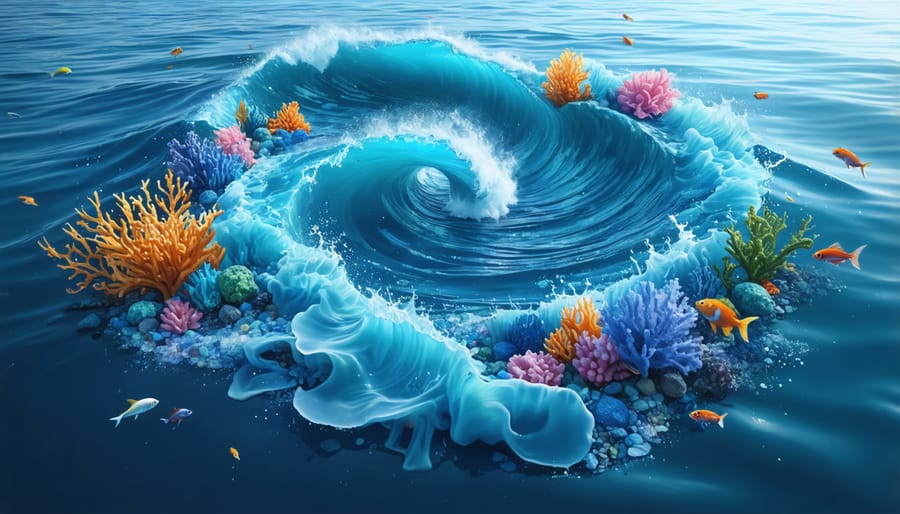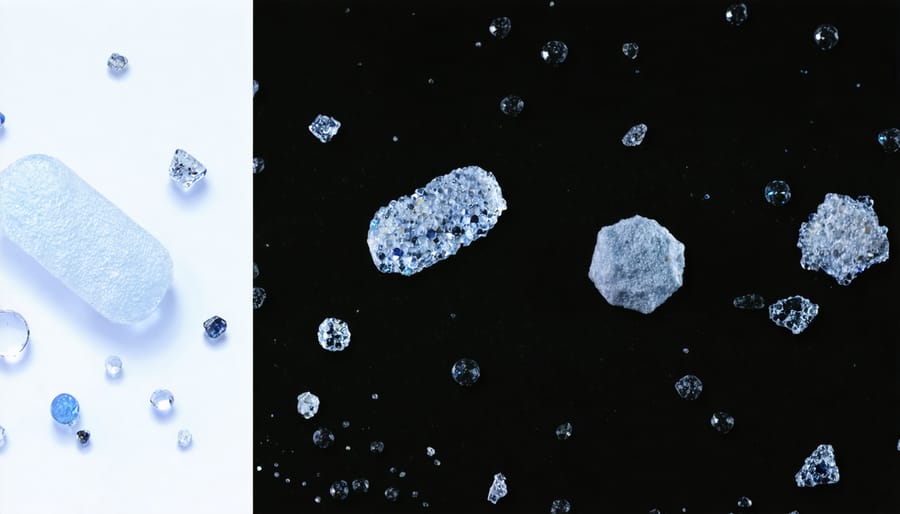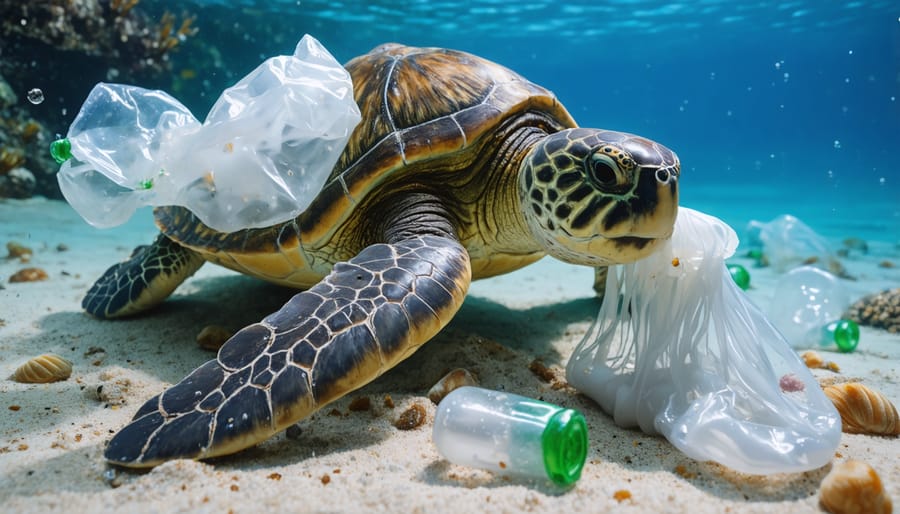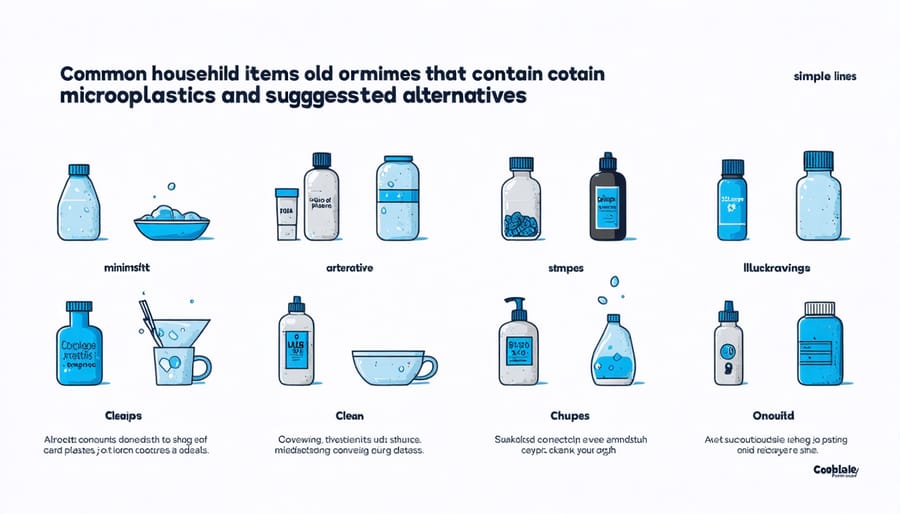
Invisible yet devastating, microplastic pollutants have emerged as one of the most pressing ocean ecosystem threats of our time. These microscopic plastic particles, smaller than 5 millimeters in size, now infiltrate every corner of our marine environments—from the deepest ocean trenches to the most remote Arctic ice. Each year, an estimated 8 million metric tons of plastic enters our oceans, gradually breaking down into these insidious particles that are ingested by marine life and work their way up the food chain to human consumption.
The impact extends far beyond visible pollution: microplastics absorb toxic chemicals, act as vectors for invasive species, and cause severe physiological damage to marine organisms. Recent studies have detected these particles in human blood, placenta, and organs, raising alarming questions about their long-term effects on human health. As marine scientists race to understand the full scope of this crisis, one thing becomes clear: the solution lies not just in cleaning up our oceans, but in fundamentally changing how we produce, consume, and dispose of plastic materials.
What Are Microplastics and Where Do They Come From?
Primary vs. Secondary Microplastics
Microplastics enter our environment through two distinct pathways, categorized as primary and secondary microplastics. Primary microplastics are deliberately manufactured at microscopic sizes for specific purposes, such as microbeads in cosmetics, synthetic fibers in clothing, or industrial abrasives used in manufacturing processes. These tiny particles are designed to be small from the start and often enter waterways directly through household drains or industrial discharge.
Secondary microplastics, on the other hand, result from the breakdown of larger plastic items. When plastic waste like water bottles, shopping bags, or fishing gear is exposed to environmental factors such as sunlight, wave action, and weathering, it gradually fragments into increasingly smaller pieces. This degradation process can take hundreds of years, during which the plastic items break down into countless microplastic particles.
Understanding the difference between these two categories is crucial for developing effective solutions. While primary microplastics can be regulated through legislation banning their manufacture and use, addressing secondary microplastics requires broader strategies focused on reducing overall plastic consumption and improving waste management systems. Many countries have already taken steps to ban primary microplastics in consumer products, but the challenge of managing secondary microplastics continues to grow as existing plastic waste persists in our environment.

Common Sources in Daily Life
Microplastics infiltrate our daily lives through numerous common sources, many of which might surprise you. Synthetic clothing is a major contributor, releasing thousands of microfibers with each wash cycle. Every time we launder items like fleece jackets, yoga pants, or polyester shirts, these tiny plastic particles enter our water systems through washing machine discharge.
Personal care products represent another significant source. Many facial scrubs, toothpaste, and body washes historically contained microbeads – tiny plastic particles used as exfoliants. While many countries have now banned these ingredients, some products still contain them.
Single-use plastic items contribute substantially to microplastic pollution through degradation. Water bottles, food containers, shopping bags, and packaging materials break down into smaller particles over time. Even the act of opening plastic packaging can create microscopic plastic particles that become airborne.
Vehicle tires are a less obvious but significant source, shedding tiny particles as they wear down on roads. These particles are then washed into water systems through rain and street runoff. Similarly, synthetic rubber from shoe soles contributes to this form of pollution.
Paint is another unexpected source, both from household use and industrial applications. As painted surfaces weather and chip, they release microplastic particles into the environment. This includes marine paints used on boats and ships, which directly impact our oceans.
Impact on Marine Life

Direct Physical Effects
Marine animals interact with microplastics in various concerning ways that directly impact their physical well-being. When these tiny plastic particles enter marine ecosystems, they are often mistaken for food by various species, from tiny zooplankton to large marine mammals. This confusion occurs because microplastics can closely resemble natural food sources in both size and appearance.
The ingestion of microplastics can lead to severe physical complications in marine life. These particles can accumulate in animals’ digestive systems, creating blockages that prevent proper nutrition absorption and cause a false sense of fullness. As a result, many animals may stop eating altogether, leading to malnutrition and starvation.
Physical entanglement is another significant concern, particularly with slightly larger microplastic fragments. Marine animals can become entangled in clustered microplastics, affecting their mobility and ability to hunt or escape predators. In filter-feeding species like whales and manta rays, microplastics can clog their filtering apparatus, severely impacting their feeding efficiency.
Marine biologists have observed microplastics becoming embedded in the tissues of various species, causing inflammation and physical injury. In coral systems, microplastic particles can adhere to coral polyps, interfering with their feeding mechanisms and potentially leading to tissue damage.
The physical effects extend to reproduction as well. Studies have shown that microplastics can impact egg development in marine species and interfere with larval development. In some cases, these particles have been found transferred from parent to offspring, suggesting potential generational impacts on marine populations.
Small marine organisms often mistake microplastics for their natural prey, leading to decreased feeding efficiency and reduced energy intake, ultimately affecting their growth and survival rates.
Chemical Contamination and Bioaccumulation
Microplastics serve as both carriers and magnets for harmful chemical compounds, creating a complex web of contamination in marine ecosystems. These tiny particles readily absorb persistent organic pollutants (POPs), industrial chemicals, and heavy metals from surrounding waters. When marine organisms consume these contaminated particles, they’re not just ingesting plastic – they’re taking in a cocktail of toxic substances.
The process of bioaccumulation makes this situation particularly concerning. Small organisms like plankton and filter feeders consume microplastics, which are then eaten by larger creatures, similar to how destructive fishing practices impact marine food chains. As these particles move up the food chain, both the plastics and their associated toxins become more concentrated in each successive organism – a process known as biomagnification.
Dr. Maria Chen, a marine toxicologist, explains: “What we’re seeing is particularly troubling because these chemicals can interfere with hormonal systems, affect reproduction, and damage cellular structures in marine life. Some of these compounds are known carcinogens and endocrine disruptors.”
Recent studies have detected microplastics and their associated chemicals in various commercially important seafood species, raising concerns about human health implications. The chemicals found include phthalates, bisphenol A (BPA), and various flame retardants, which can persist in organisms’ tissues for extended periods.
Understanding these chemical interactions is crucial for developing effective solutions and protecting both marine ecosystems and human health. Scientists are currently working on methods to better track these chemical signatures and their movement through marine food webs.
Solutions in Action
Scientific Research and Innovation
Scientists worldwide are making significant breakthroughs in understanding and addressing the microplastic crisis through innovative research and technology. Recent studies have focused on developing novel detection methods, including the use of hyperspectral imaging and artificial intelligence to identify microplastics in marine environments more accurately and efficiently.
A promising advancement comes from researchers at the University of California, who have engineered specialized bacteria capable of breaking down certain types of microplastics into harmless compounds. This biotechnology solution offers hope for tackling plastic pollution without introducing additional harmful chemicals into marine ecosystems, supporting ongoing marine conservation efforts.
Scientists are also exploring nature-inspired solutions. Research teams in Japan and Germany have developed synthetic materials that mimic the filtering mechanisms of marine organisms like mussels and barnacles. These bio-inspired filters can capture microplastics as small as 10 micrometers while allowing water to flow through freely.
Another groundbreaking innovation involves using acoustic waves to separate microplastics from water, a method that shows particular promise for treating wastewater before it enters marine environments. This technology has achieved removal rates of up to 99% in laboratory conditions and is currently being scaled for industrial applications.
Citizen science initiatives are playing an increasingly important role in research efforts. Through smartphone apps and online platforms, researchers can now collect vast amounts of data about microplastic distribution, helping to create more accurate models of how these pollutants move through marine ecosystems and where they accumulate.
Policy Changes and Corporate Responsibility
Recent years have witnessed significant progress in addressing microplastic pollution through policy changes and corporate initiatives. The European Union’s Single-Use Plastics Directive, implemented in 2021, has set a precedent for global action by banning various disposable plastic items and introducing stricter regulations for plastic producers.
Many countries have followed suit, with Canada announcing comprehensive single-use plastic bans and the United States passing the Save Our Seas 2.0 Act, which strengthens domestic infrastructure to prevent marine debris. These legislative efforts complement ongoing marine habitat restoration programs and demonstrate growing governmental commitment to ocean conservation.
In the corporate sector, major companies are redesigning their packaging and products to reduce plastic waste. Companies like Unilever and Procter & Gamble have pledged to use 100% recyclable packaging by 2025, while innovative startups are developing plastic alternatives from biodegradable materials. The fashion industry has also joined the movement, with numerous brands now using recycled ocean plastics in their products.
Extended Producer Responsibility (EPR) schemes are gaining traction, requiring manufacturers to take responsibility for their products’ entire lifecycle. These initiatives, combined with voluntary corporate commitments, are creating a shift toward more sustainable business practices. However, experts emphasize that continued vigilance and stronger enforcement mechanisms are essential to ensure these commitments translate into meaningful action.

What You Can Do Today
While the global challenge of microplastic pollution may seem overwhelming, there are numerous effective actions you can take today to reduce your plastic footprint. Start by examining your daily routines and making simple switches: opt for reusable water bottles and coffee cups, choose natural fiber clothing over synthetic materials, and use cloth shopping bags instead of plastic ones.
In your home, install a washing machine filter to catch microfibers from synthetic clothing during wash cycles. When shopping for personal care products, avoid items containing microbeads by checking ingredient lists for polyethylene (PE) and polypropylene (PP). Choose natural alternatives like ground almonds or oatmeal for exfoliation.
Consider your food storage habits: replace plastic containers with glass or stainless steel alternatives, and use beeswax wraps instead of plastic wrap. When shopping, select products with minimal packaging and buy in bulk when possible to reduce plastic waste.
Participate in local beach or river cleanups to prevent larger plastic items from breaking down into microplastics. Share your knowledge about microplastic pollution with friends and family, and support organizations working to address this issue. You can also advocate for policy changes by contacting your local representatives about plastic reduction initiatives.
Remember that small actions, when multiplied across communities, create significant impact. By incorporating these changes into your daily routine, you become part of the solution to reducing microplastic pollution in our oceans and waterways. Your choices matter, and every step toward reducing plastic use helps protect marine ecosystems for future generations.
The pervasive nature of microplastic pollution presents one of the most significant challenges to marine ecosystem health in our time. Throughout this article, we’ve explored how these tiny particles infiltrate our oceans, impact marine life at every level, and ultimately find their way into the human food chain. The evidence is clear: microplastics pose a severe threat to marine biodiversity and human health alike.
However, there is hope in the collective actions we can take to address this crisis. From supporting legislation that bans single-use plastics to participating in beach cleanup initiatives, every individual can contribute to the solution. Scientists and conservation groups worldwide are developing innovative technologies to capture microplastics before they enter our waterways, while researchers continue to study their effects and propose mitigation strategies.
You can make a difference by reducing your plastic consumption, properly disposing of waste, and supporting organizations dedicated to ocean conservation. Consider joining local beach cleanup efforts, educating others about microplastic pollution, and making conscious consumer choices that minimize plastic use. Small changes in our daily habits, when multiplied across communities, can create significant positive impact.
The future of our oceans depends on the actions we take today. By working together – scientists, conservationists, educators, and concerned citizens – we can turn the tide on microplastic pollution and preserve our marine ecosystems for future generations.
jessica
Ava Singh is an environmental writer and marine sustainability advocate with a deep commitment to protecting the world's oceans and coastal communities. With a background in environmental policy and a passion for storytelling, Ava brings complex topics to life through clear, engaging content that educates and empowers readers. At the Marine Biodiversity & Sustainability Learning Center, Ava focuses on sharing impactful stories about community engagement, policy innovations, and conservation strategies. Her writing bridges the gap between science and the public, encouraging people to take part in preserving marine biodiversity. When she’s not writing, Ava collaborates with local initiatives to promote eco-conscious living and sustainable development, ensuring her work makes a difference both on the page and in the real world.
